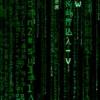No I didn't. It happened too quickly...

Antivirus programs, Malwarebytes, SpyBot, AVG, RKill, etc. will not st
#46

 Posted 02 September 2015 - 07:41 PM
Posted 02 September 2015 - 07:41 PM

No I didn't. It happened too quickly...
#47

 Posted 03 September 2015 - 09:05 AM
Posted 03 September 2015 - 09:05 AM

Thanks for the info. Please provide a fresh set of logs.
Fresh Set of Logs
1. Right click on FRST64.exe and select Run as administrator. When the tool opens click Yes to disclaimer.
2. Please ensure you place a check mark in the Addition.txt check box at the bottom of the form before running.
3. Press Scan button.
4. It will produce a log called FRST.txt in the same directory the tool is run from (which should now be the desktop)
5. Please copy and paste log back here.
6. Because you selected the Addition.txt check box this log will be created as well. Please copy and paste this log as well.
Items for your next post
1. FRST and Addition logs
#48

 Posted 03 September 2015 - 02:08 PM
Posted 03 September 2015 - 02:08 PM

Brian,
Now, it won't boot up. It loops over and over from the the Samsung (F2 for setup and F4 for Recovery) screen, to a black screen, then it adds a blinking curser at the top left, then it goes back to the Samsung screen.
F8 doesn't work anymore to boot into safe mode.
Though, the F2 function works to start the Setup Utility, but the F4 function stalls everything and I just get a black screen with a blinking curser at the top left...
Edited by carolinachris, 03 September 2015 - 02:13 PM.
#49

 Posted 03 September 2015 - 02:10 PM
Posted 03 September 2015 - 02:10 PM

I wonder if the verifier /reset didn't take or was set back. Are you able to boot into Safe Mode with Networking again?
#50

 Posted 03 September 2015 - 02:24 PM
Posted 03 September 2015 - 02:24 PM

I wonder if the verifier /reset didn't take or was set back. Are you able to boot into Safe Mode with Networking again?
Brian,
No, F8 doesn't work anymore...
Edited by carolinachris, 03 September 2015 - 02:25 PM.
#51

 Posted 03 September 2015 - 02:50 PM
Posted 03 September 2015 - 02:50 PM

Was this after you ran FRST again to produce the logs? Or was this just from rebooting your machine before running FRST?
#52

 Posted 03 September 2015 - 06:29 PM
Posted 03 September 2015 - 06:29 PM

Brian,Was this after you ran FRST again to produce the logs? Or was this just from rebooting your machine before running FRST?
It happened when I first tried to start the computer today...
#53

 Posted 03 September 2015 - 06:32 PM
Posted 03 September 2015 - 06:32 PM

OK. Do you have a Windows 7 DVD that we can boot from?
#54

 Posted 03 September 2015 - 07:51 PM
Posted 03 September 2015 - 07:51 PM

Brian,OK. Do you have a Windows 7 DVD that we can boot from?
No, I don't...
Edited by carolinachris, 03 September 2015 - 07:52 PM.
#55

 Posted 03 September 2015 - 08:06 PM
Posted 03 September 2015 - 08:06 PM

OK, no problem. You will need access to another machine and a USB drive for these instructions.
Step#1 - Create a Bootable USB Drive
1. Please download the following three things to the Desktop of your Working computer.
a) Rufus
b) Windows 7 64-Bit RC ISO (I know you mentioned that you had one however I would like to use this one if you don't mind)
c) Farbar Recovery Scan Tool
2. Insert your USB drive into your working computer. Note: Please ensure that there isn't anything on the USB drive that you need as we will be formatting it.
3. Right-click on rufus-1.4.10.exe and select Run as administrator (I'm assuming your working machine is at least Windows Vista). Answer Yes to Allow if prompted.
4. If you are asked to check for application updates. Just answer No.
5. Please click on the icon as shown below and select the ISO file that you downloaded to your desktop in step#1b.
6. Click the Start button.
7. When it's Done click the Close button.
Step#2 - Copy FRST64 on to the same USB Drive
1. Click the Start Orb in the lower left corner of the screen and click on Computer.
2. Click on the drive letter that represents your USB Drive and then copy the FRST64.exe from your Desktop to this location.
Step#3 - Boot Your Sick Machine with USB Drive
1. Insert the USB Drive into your Sick computer.
2. Ensure the power is off on this computer.
3. Ensure that your system is configured to boot 1st from the USB Drive before your main hard drive. There are variations on how to do this depending on what machine you have
however a couple links that show the general steps can be found here and here.
4. Once the BIOS is set to boot from the USB Drive, when you boot your machine with the USB Drive plugged in you should get a message asking you to hit any key to boot from the USB.
Go ahead and do this.
5. The first screen that will appear should be asking for your keyboard layout. Go ahead and click Next.
6. The next screen will attempt to locate your Windows 7 Installation. If it was successful it will be highlighted and you will be able to click Next. Go ahead and do this.
7. You will have several System Recovery Options to choose from. Please click on "Command Prompt".
Step#4 - Generate Needed Logs
1. Please type the word notepad in the black command prompt window and hit Enter on the keyboard.
2. Under the File menu of notepad, please select Open.
3. Double-click on Computer and then identify which driver letter represents your USB drive. It should be the one labeled Repair disc Windows 7 64-bit.
4. Click Cancel on the Open Dialog from notepad and close notepad.
5. In the Command Prompt window, please type F:\FRST64.exe and press enter on the keyboard. Note: Replace F with the Drive Letter you identified in bullet#3.
6. The tool will start to run.
7. If a disclaimer comes up, Please answer Yes.
8. Under the Optional Scan section, please check List BCD.
9. Click the Scan button. It will create a log file named FRST.txt on the USB Drive. It will also open in Notepad when finished. You can simply close Notepad.
10. Please plug the USB Drive into your Good computer and post the contents of this log file.
11. You may keep the sick computer at the command-prompt as there are a few other things we will do.
Items for your next post
1. Contents of the FRST log file.
#56

 Posted 04 September 2015 - 11:45 AM
Posted 04 September 2015 - 11:45 AM

Brian,
I have completed steps #1 - #4.
FRST text file is attached...
Attached Files
Edited by carolinachris, 04 September 2015 - 11:51 AM.
#57

 Posted 04 September 2015 - 01:26 PM
Posted 04 September 2015 - 01:26 PM

Thank you. Please do the following now. Stop and ask if you have any questions on performing a step.
Fix Attempt
1. Plug your USB drive into your working computer and save the attached fixlist.txt on to the USB drive.
2. Download the fix.zip to your desktop. Extract the file to retrieve the fix.bat file. Copy the fix.bat file to your USB drive.
3. Plug in your USB drive into your sick computer. Try to use the same USB port as previously.
4. Type g:\frst64.exe and hit enter (replacing the letter g with the letter of your USB drive).
5. FRST will open. Click the Fix button. Notepad will open when complete. You can close notepad.
6. At the command-prompt (I'm assuming you left everything as it was), please copy/paste or type the following and hit enter.
reg load HKLM\Temp_Hive c:\windows\system32\config\system
7. If that went OK you should see a message that says it completed successfully. If you don't then your OS drive is a different letter than c. You can type notepad and hit enter to figure out what your OS drive letter is and repeat with that drive letter. It definitely isn't the letter X.
8. Now type g:\fix.bat and hit enter (replacing g with the letter of your USB drive).
9. If my hunch is right, you should see at least two lines in the command prompt window that say The operation completed successfully.
10. At the command-prompt, please copy/paste or type the following and hit enter.
reg unload HKLM\Temp_Hive
11. You should receive a message that it was successful.
12. Remove the USB drive and reboot your computer.
Let me know if you get to the desktop.
Attached Files
#58

 Posted 06 September 2015 - 10:39 AM
Posted 06 September 2015 - 10:39 AM

Brian,
Sorry for the delay.
Fix attempt steps 1 - 7 went fine (OS drive was c).
Step #8: I typed h:\fix.bat (h being the letter of the USB drive) and pressed enter to receive this output:
'h:\fix.bat' is not recognized as an internal or external command,
I tried it again, with H:\fix.bat and received the same output...
Edited by carolinachris, 06 September 2015 - 10:42 AM.
#59

 Posted 06 September 2015 - 11:07 AM
Posted 06 September 2015 - 11:07 AM

Type h: and hit enter. If this is your USB drive you will be at a h:\ prompt.
Type dir and hit enter. This should show a listing of the files that are on the USB drive. Is one of the files named fix.bat?
#60

 Posted 06 September 2015 - 05:01 PM
Posted 06 September 2015 - 05:01 PM

Brian,
Yes, one of the files is fix.bat
Didn't know how to get back to the cmd prompt of drive x[c]:\ so ---
I also ran h:\fix.bat & enter; and received the output:
h:\>reg delete "HKEY_LOCAL_MACHINE\Temp_Hive\ControlSet001\Control\Session Manager\Memory Management" /f /v VerifyDriverLevel
ERROR: The system was unable to find the specified registry key or value.
Edited by carolinachris, 06 September 2015 - 05:15 PM.
Similar Topics
0 user(s) are reading this topic
0 members, 0 guests, 0 anonymous users
As Featured On:








 This topic is locked
This topic is locked







 Sign In
Sign In Create Account
Create Account

